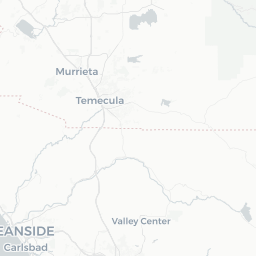4. An environmental index with a Principal Component Analysis
The objective of this demo is to create a new environment index from the analysis of the principal components of multiple variables in the city of San Diego, the dataset used is:
- Landcover
- % Impervious
- % Tree cover
- NDVI index
- EVI index
All the dataset is from USGS National Land Cover Database and MOD13Q1.006.
 Information: Information: |
- For this demo you need to have rgee, sf, tidyverse, and viridis packages previously installed. |
4.1 Requirements
library(rgee)
library(tidyverse)
library(sf)
library(viridis)
source("https://raw.githubusercontent.com/ambarja/rgee_landcover/main/pca_rgee.R")
ee_Initialize()── rgee 1.1.2 ────────────────────────── earthengine-api 0.1.292 ──
✓ user: not_defined
✓ Initializing Google Earth Engine: DONE!
✓ Earth Engine account: users/ambarja
─────────────────────────────────────────────────────────────────── 4.2 Vector layer reading of our study area
geodata <- st_read(
"https://github.com/healthinnovation/sdb-gpkg/raw/main/SanDiego.gpkg"
)
sandiego <- geodata %>% sf_as_ee() 4.3 Processing data with rgee
years <- c(1992, 2001,2004,2006,2008,2011,2013,2016) %>% ee$List()
nldc <- years$
map(ee_utils_pyfunc(function(x) {
ee$ImageCollection("USGS/NLCD_RELEASES/2016_REL")$
select(c("landcover"))$
filter(ee$Filter$calendarRange(x, x, "year"))$
sum()$
clip(sandiego)
})
)
nldc <- ee$ImageCollection(nldc)$
toBands()$
select("7_landcover")$
rename("nldc")
years <- c(2011, 2016) %>% ee$List()
impervious <- years$
map(ee_utils_pyfunc(function(x) {
ee$ImageCollection("USGS/NLCD_RELEASES/2016_REL")$
select("impervious")$
filter(ee$Filter$calendarRange(x, x, "year"))$
sum()$
clip(sandiego)
})
)
imp <- ee$ImageCollection(impervious)$
toBands()$
select("0_impervious")$
rename("imp")
years <- c(2011, 2016) %>% ee$List()
tree_cover <- years$
map(ee_utils_pyfunc(function(x) {
ee$ImageCollection("USGS/NLCD_RELEASES/2016_REL")$
select("percent_tree_cover")$
filter(ee$Filter$calendarRange(x, x, "year"))$
sum()$
clip(sandiego)
})
)
tree <- ee$ImageCollection(tree_cover)$
toBands()$
select("1_percent_tree_cover")$
rename("tree")
modis_years <- c(2010:2021) %>% ee$List()
ndvi <- modis_years$
map(ee_utils_pyfunc(function(x){
ee$ImageCollection("MODIS/006/MOD13Q1")$
select("NDVI")$
filter(ee$Filter$calendarRange(x,x,"year"))$
mean()$
multiply(0.0001)$
clip(sandiego)
})
)
ndvi <- ee$ImageCollection(ndvi)$
toBands()$
select("0_NDVI")$
rename("ndvi")
evi <- modis_years$
map(ee_utils_pyfunc(function(x){
ee$ImageCollection("MODIS/006/MOD13Q1")$
select("EVI")$
filter(ee$Filter$calendarRange(x,x,"year"))$
mean()$
multiply(0.0001)$
clip(sandiego)
})
)
evi <- ee$ImageCollection(evi)$
toBands()$
select("0_EVI")$
rename("evi")
stack_evironment <- ee$Image(
c(nldc, imp, tree, ndvi, evi)
)$
toDouble()4.4 Variable standardization
standCov <-
ee_scale(
image = stack_evironment,
ee_feature = sandiego,
scale = 30,
namevar = c("nldc","imp","tree","ndvi","evi")
)4.5 PCA
PCA <-
ee_pca(
image = standCov,
ee_feature = sandiego,
scale = 30,
nvar = 5
)$select(sprintf("pc%1$s", 1:5))
Map$centerObject(sandiego)
Map$addLayer(PCA,visParams = list(bands=c("pc1","pc2","pc3")))4.6 Table of eingvectors
eVectors(
image = standCov,
ee_feature = sandiego,
scale = 30,
nvar = 5
) eingvector eVec1 eVec2 eVec3 eVec4 eVec5
1 1 0.342 -0.237 0.354 0.597 0.588
2 2 0.598 -0.661 -0.355 -0.193 -0.205
3 3 -0.141 -0.395 0.815 -0.257 -0.306
4 4 0.711 0.592 0.290 -0.177 -0.170
5 5 0.001 0.024 -0.026 0.714 -0.7004.7 Table of eingvalues
eValues(
image = standCov,
ee_feature = sandiego,
scale = 30,
nvar = 5
) eingvalue values
1 eVal1 2.40
2 eVal2 1.38
3 eVal3 0.74
4 eVal4 0.42
5 eVal5 0.064.8 Summary table
table <-
imporPCA(
image = standCov,
ee_feature = sandiego,
scale = 30,
nvar = 5
)
table eingvalue values component variance cumulative
1 eVal1 2.40 pc1 48.0 48.0
2 eVal2 1.38 pc2 27.6 75.6
3 eVal3 0.74 pc3 14.8 90.4
4 eVal4 0.42 pc4 8.4 98.8
5 eVal5 0.06 pc5 1.2 100.04.9 Plot PCA
table %>%
ggplot(aes(x = reorder(component, variance), y = variance, fill = variance)) +
geom_bar(stat = "identity") +
theme_bw() +
coord_flip() +
labs(x = "PCs", y = "%Total variance")
4.10 Construction of an environmental index
index <- PCA$
select(
c("pc1","pc2","pc3")
)$
reduce("sum")4.11 Identifying min and max values of environmental index
(minmax <- index$reduceRegion(
reducer = ee$Reducer$minMax(),
geometry = sandiego,
scale = 50*1000)$
getInfo())$sum_max
[1] 0.9375844
$sum_min
[1] -0.69833014.12 Mapping environmental index
viz <- list(
min = -0.6983301 ,
max = 0.9375844,
palette = viridis(n = 100)
)
Map$addLayer(index,visParams = viz) +
Map$addLegend(visParams = viz,name = "Environment index")













